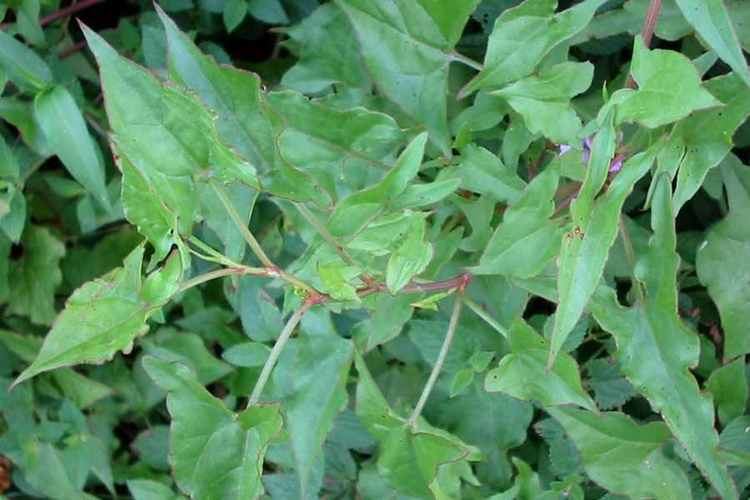Kingdom Plantae Family Polygonaceae Scientific name Rumex sagittatus | Order Caryophyllales Genus Acetosa Rank Species | |
 | ||
Similar Rumex brownii, Rumex salicifolius, Rumex graminifolius, Rumex venosus, Rumex maderensis | ||
Acetosa sagittata turkey rhubarb
Acetosa sagittata, commonly known as turkey rhubarb or rambling dock or potato vine, is a herbaceous perennial plant native to southern Africa, which has become a weed in Australia and New Zealand.
Contents
Taxonomy
Initially described as Rumex sagittatus by Swedish botanist Carl Peter Thunberg, it was later placed in the genus Acetosa by Australian botanists Lawrie Johnson and Barbara Briggs. Its specific name is derived from the Latin sagitta "arrow", hence "arrow-shaped". The plant is known by various common names including turkey rhubarb, arrowhead vine, potato vine, rambling dock or climbing sorrel.
Description
Acetosa sagittata is a soft-stemmed herbaceous scrambling and climbing plant with prominent triangular arrow-shaped leaves 3-6 cm (1.4-2.4 in) in length and 2-4 cm (0.8-1.6 in) wide. The grooved green stem may be distinctly tinted red at times. The small pinkish flowers grow on panicles up to 15 cm (6 in) long. These are followed by a 3-sided greenish 0.8-1 cm diameter pod. The plant grows from a tuber, which may be up to 10 cm (4 in) long. The plant flowers and sets seed over summer, and may die back to the tuber in colder areas.
Distribution and habitat
The plant is native to southern Africa, where it occurs from Malawi and Zambia south to South Africa. It has become naturalised in many parts of Australia near urban areas, from Queensland to eastern Tasmania, and warmer locales in New Zealand.
It spreads by seed or by resprouting from the tuber. The seeds float on water and hence may be conveyed far from the parent plant. Tubers may be broken up by tractors or road graders and each fragment may be able to regrow; they can also be difficult to find with removal of plants by hand. Acetosa sagittata may grow and smother other plants it covers.
Uses
The leaves and young stems can be cooked and eaten and are sometimes cultivated as a vegetable in Java.
